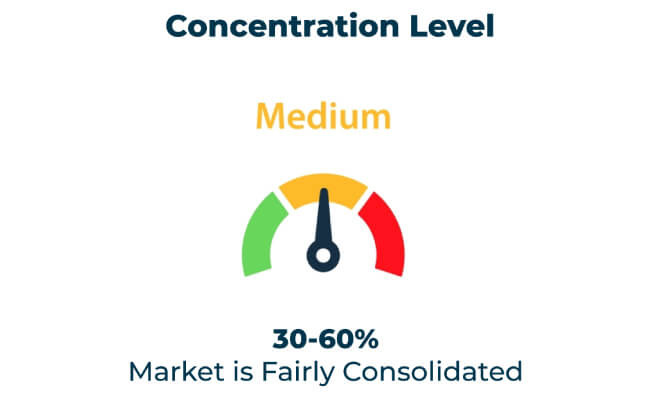The micro perforated films packaging market is experiencing rapid growth as industries adopt innovative and efficient solutions to meet consumer demand for freshness and sustainability. These films, designed with precision perforations, allow controlled airflow and moisture exchange, making them ideal for food packaging, particularly fresh produce, bakery items, and ready-to-eat meals. By 2035, the market is expected to reach USD 2.23 billion, growing at a compound annual growth rate (CAGR) of 3.6%. Key growth factors include advancements in material science, rising consumer preference for fresh and minimally processed food, and regulatory emphasis on reducing food waste.
| Attribute | Details |
|---|---|
| Projected Value by 2035 | USD 2.23 billion |
| CAGR during the period 2025 to 2035 | 3.6% |
Manufacturers are developing highly customized solutions with advanced perforation technologies, biodegradable materials, and enhanced durability. Collaborations with food processors and retailers ensure alignment with market requirements and environmental goals.
Explore FMI!
Book a free demo
Factors Driving Market Growth
The micro perforated films packaging market is driven by several key trends:
| Category | Market Share (%) |
|---|---|
| Top 3 Players (Amcor, Sealed Air, Bolloré) | 18% |
| Rest of Top 5 Players (Uflex, Coveris) | 07% |
| Next 5 of Top 10 Players | 13% |
Type of Player & Industry Share (%)
| Type of Player | Market Share (%) |
|---|---|
| Top 10 Players | 38% |
| Next 20 Players | 26% |
| Remaining Players | 36% |
This medium level of concentration indicates a dynamic market with opportunities for innovation and growth among both leading and emerging players.
Year-on-Year Leaders

Emerging regions such as Asia-Pacific, Africa, and South America present high growth potential. Scalable and cost-effective solutions are highly sought in these areas.
In-House vs. Contract Manufacturing
| Region | North America |
|---|---|
| Market Share (%) | 30% |
| Key Drivers | Emphasis on reducing food waste and adopting sustainable solutions. |
| Region | Europe |
|---|---|
| Market Share (%) | 35% |
| Key Drivers | Stringent regulations and demand for biodegradable materials. |
| Region | Asia-Pacific |
|---|---|
| Market Share (%) | 25% |
| Key Drivers | Rapid growth in fresh food consumption and efficient packaging needs. |
| Region | Other Regions |
|---|---|
| Market Share (%) | 10% |
| Key Drivers | Growing interest in cost-effective and eco-friendly packaging. |
The micro perforated films packaging market will thrive with advancements in precision perforation, sustainable materials, and energy-efficient manufacturing. Companies prioritizing innovation and sustainability will lead the market.
| Tier | Key Companies |
|---|---|
| Tier 1 | Amcor, Sealed Air, Bolloré |
| Tier 2 | Uflex, Coveris |
| Tier 3 | Mondi, AEP Industries |
The micro perforated films packaging market is poised for significant growth, driven by innovation, sustainability goals, and evolving consumer preferences. Companies investing in precision technologies and eco-friendly practices will gain a competitive edge.
Key Definitions
Abbreviations
Research Methodology
This report is based on primary research, secondary data analysis, and market modeling, validated through industry expert consultations.
The micro perforated films packaging market encompasses solutions for fresh produce, bakery, ready-to-eat meals, and other applications requiring breathable packaging to extend shelf life and maintain quality.
Advancements in perforation technology, sustainability, and rising demand for fresh food drive growth.
The market is expected to reach USD 2.23 billion, growing at a compound annual growth rate (CAGR) of 3.6%.
Amcor, Sealed Air, and Bolloré are among the leading companies.
High production costs, technical complexities, and limited recycling infrastructure are challenges.
Opportunities include growth in fresh food markets, advancements in sustainable materials, and increased awareness of food waste reduction.
Korea Tape Dispenser Market Analysis by Material, Product Type, Technology, End Use, and Region through 2025 to 2035
Medical Transport Box Market Trend Analysis Based on Material, Capacity, End-User and Regions 2025 to 2035
Japan Heavy-duty Corrugated Packaging Market Analysis based on Product Type, Board type, Capacity, End use and City through 2025 to 2035
Corrugated Board Market Analysis by Material and Application Through 2035
Waterproof Packaging Market Trends - Demand & Industry Forecast 2025 to 2035
Thermochromic Labels Market Insights - Innovations & Growth 2025 to 2035

Thank you!
You will receive an email from our Business Development Manager. Please be sure to check your SPAM/JUNK folder too.